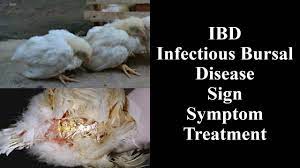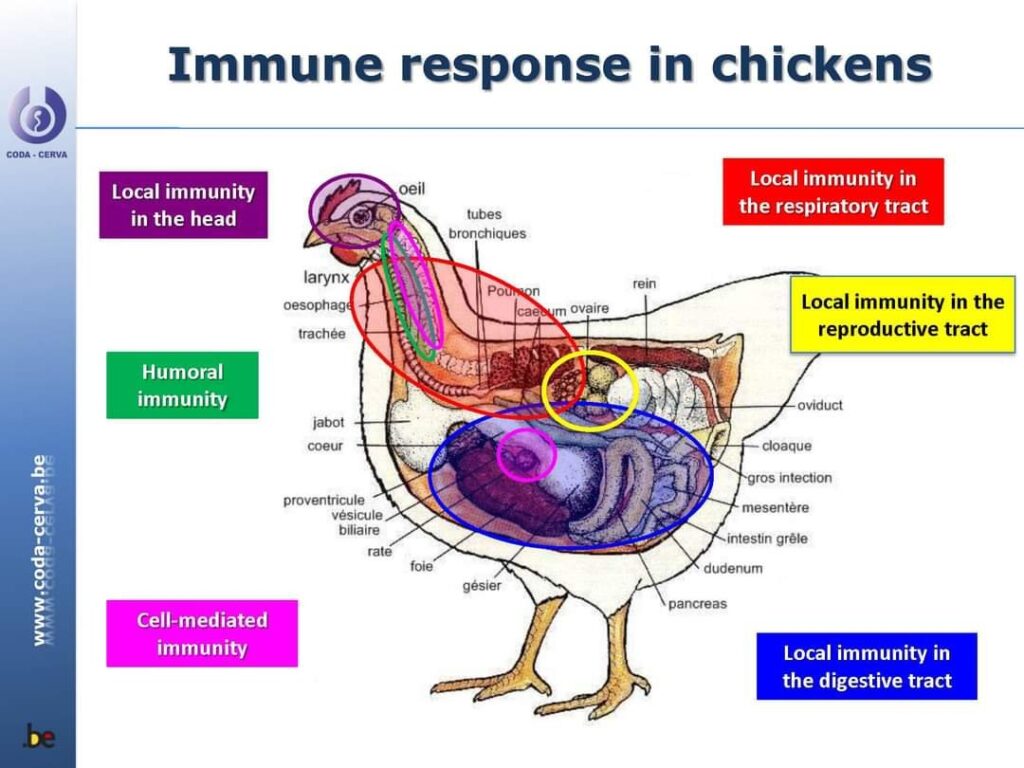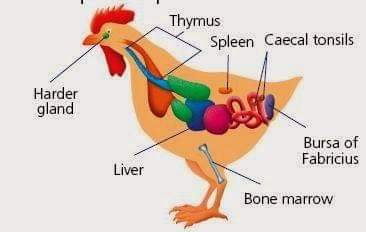BASIC PREVENTION AND CONTROL OF INFECTIOUS BURSAL DISEASE (IBD/GUMBORO) IN POULTRY PRODUCTION
DR.Maninder Nath Bhararti,Poultry consultant.
Infectious bursal disease also known as Gumboro is an acute and highly contagious disease of young chickens, usually 3-6-week-old chickens. It is caused by a virus known as the infectious bursal disease virus (IBDV). This virus belongs to the avibirnavirus family and can survive for months in contaminated farms thereby constituting a big threat to the farms. Once the virus gain entry into the system of a bird, it affects the tissues of the immune system, especially the bursa of Fabricius (BF) organ, resulting in immunosuppression and susceptibility to other infections, such as E. coli, Salmonella, Mycoplasma, coccidia, Marek’s disease and others. Till date, the chicken is considered the only species in which natural infection occurs.
TRANSMISSION
The mode of transmission is primarily through the fecal-oral route (occurs when bacteria or viruses found in the stool of one chick are swallowed by another). Feed, water and litter from an infected house remain infective for a long time. Also, the virus is resistant to some disinfectants. However, there is no evidence for egg (vertical) transmission of IBDV.
Other Names:
✔Gumboro Disease,
✔Infectious Avian Nephrosis
Introduction
Infectious bursal disease (IBD) is an acute viral infection of young chickens (<17 weeks) that affects the lymphoid tissue, particularly the bursa of Fabricius.
Etiology
Infectious bursal disease is caused by a virus called infectious bursal disease virus (IBDV), which belongs to the avibirnavirus family. The virus is very hardy, can survive in a wide variety of environmental conditions, and is difficult to effectively decontaminate.
CLINICAL Signs AND LESIONS

Sudden increase in mortality Depression and ruffling of feathers
Poor or lack of appetite Trembling and severe prostration
Huddling,
Reluctance to rise
Whitish and watery diarrhoea
High morbidity

Symptoms
⚜The incubation period is 3-4 days. ⚜Morbidity is 10-80%.
⚜The birds become anorectic.
⚜Bloody diarrhea with accumulation of fecal material around the vent.
⚜Eggs are malformed in laying birds.
⚜The birds body weight severely hampers
⚜Edema under skin of the thighs and breast and bird is not able to walk.
Post-mortem
In addition to clinical signs, birds will often have post-mortem lesions (identified upon autopsy) indicative of IBDV infection. The bursa of Fabricius is the main organ affected, showing swelling from
✔edema and hemorrhage during the early stages of the disease and then
✔shrinking (atrophy) 7-8 days following infection.
✔ thigh muscles may be noted due to impaired blood clotting.
✔Enlarged kidneys and
✔spleen are also typical of IBDV infection.
✔ Urates deposit in kidneys.
✔Hemorrhages at the mucosa of proventriculus and gizzard.
Diagnosis
History,
clinical signs, and
postmortem lesions are often enough to make
a diagnosis of IBD
Laboratory testing involves
✔isolation of the virus, or
✔agar gel immunodiffusion test for serology.
Differential diagnoses include:
✔infectious bronchitis,
✔Marek’s disease,
✔Newcastle disease,
✔high-ly pathogenic avian influenza.
Strict adherence to biosecurity measures
Rigorous cleaning and disinfection between flocks are essential for minimizing potential disease spread
Vaccination is highly recommended.
Control
✔Rigorous disinfection of contaminated farms after depopulation has achieved limited success.
✔Live vaccines of varying low pathogenicity can be administered by eye drop, drinking water, or SC routes at 1–21 days of age generally given at 14 days in broilers.
✔Vectored vaccines that express the IBDV VP2 protein in herpesvirus of turkeys (HVT) can be used in ovo or at hatch.
✔Breeder flocks should be vaccinated one or more times during the growing period, first with a live vaccine and again just before egg production with an oil-adjuvanted, inactivated vaccine
Treatment
There is no treatment.
⚜Any broad spectrum antibiotic like enrofloxacin, levofloxacin, ciprofloxacin can be used to prevent secondary bacterial infections.
⚜Vitamin supplements are also advised in this case.
Cautions (Gomboro vaccine)
- Vaccinate healthy fowl 7 days before or after the vaccination against Newcastle disease.
- Discontinue use of any disinfectants 24 hours before and after vaccination.
- Use natural cold drinking water for diluting the vaccine.
- Protect the vaccine from excessive light and heat.
- Use the entire contents without delay after rehydration.
- Incinerate the vaccine container and any unused contents.
- For Veterinary Use Only.
Some Common Poultry Diseases During Monsoons and their Treatment


